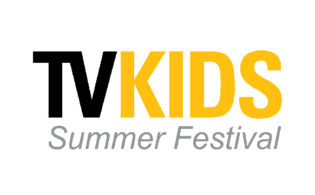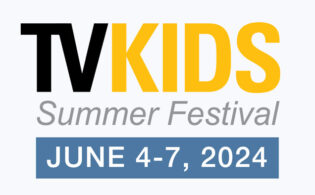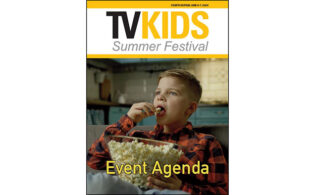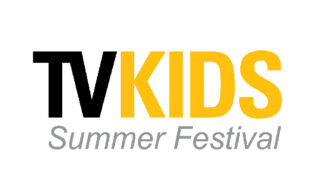This first half of the TV Kids Summer Festival super panel on the massive kids’ AVOD opportunity featured WildBrain Spark’s Jon Gisby and Roku’s Ashley Hovey discussing working with content and ad partners.
Hovey, director of AVOD growth at Roku, oversees the Kids & Family destination on The Roku Channel, which reached more than 28 million people last year, she said. Gisby is the executive VP and managing director of WildBrain Spark, “running a network of almost 1,000 channels across YouTube and all other major platforms as well,” he said.
Read excerpts from the session below and watch it in its entirety here.
At Roku, “we offer content across VOD, we have live content, we work with over 30 different content partners and we service content in lots of different ways,” Hovey said. “We do it by age group, we do it by characters and we have it all curated by our editorial team. We have tens of thousands of titles available. And we’re part of this broader ecosystem of The Roku Channel, which reached 70 million people last quarter and is continuing to grow.”
A division of kids’ and family powerhouse WildBrain, “the core of what we do is distributing our own content, so big brands like Teletubbies, Inspector Gadget, Caillou, lots of others,” said Gisby of WildBrain Spark. “And we work with a whole series of content owners. They could be big content studios that we help build audiences for. They could be companies creating for the first time—we work with a lot of toy companies. We’re trying to get the best possible premium content to kids and families. And trying to make sense of this huge shift that’s happened, accelerated with Covid, of kids consuming AVOD content, and increasingly on bigger screens as well. So we’re all about engaging audiences and bringing the best content to kids wherever they are. And importantly, monetizing that content—figuring out ways that brands and advertisers can reach that audience.”
Discussing content partnerships, Gisby noted, “We are experts at managing big catalogs of content. The majority of our viewing is on a connected TV. And the vast majority of that viewing is on content that is at least half an hour long. When we were growing up, you’d call that TV. Kids today think about it as being TV. So we partner with companies that have those catalogs of content. We also create lots of new content. We have a digital studio, and we work with lots of production houses around the world to create new content for existing brands. We also create content from scratch. We invest in our own content and happily invest alongside others who are bringing content to market. Third, and importantly, we work with advertisers.”
“Content partners we work with are looking for broad scale,” said Hovey. “They are looking for reach that they can’t get just with their standalone apps or apps they have on all of these platforms. This is an incremental way to get more audience. They’re looking for not only how do you get that content in front of the audience, but how do you monetize it in a way that is brand-safe for advertisers? And they can go back and invest in additional content opportunities, grow that audience and be a trusted source for content creation. That’s what we focus on: How do we continue to be even more effective in monetizing for these partners? And by driving scale for them, [they can] go back and do more. And we work across the board. Creators that are bringing things like Ryan’s World and CoComelon. We’re working with creators like the Mattels and the Hasbros that continue to evolve for today’s audiences. We see that same trend that Jon highlighted. Post-Covid, there’s a lot of viewing in the house, a lot of co-viewing in the same room, a lot more family time. We’re seeing it on platforms like Roku. Being the number one TV streaming platform in the U.S., we’re seeing tons of that viewing coming in. We’re trying to keep that flywheel going for all of our content partners.”
On exclusivity in rights deals, Hovey noted, “AVOD is really special.” Unlike SVOD, where new and exclusive content is key to driving and maintaining subs, “in the ad-supported world, there’s much more of a need for comfort viewing and broad distribution, for kids especially. They want the characters they know and love to be where they are. And they want to be able to find them and immerse themselves in these experiences and this world. We focus much more on an ad-supported, economic-friendly type of model, rather than feeling like exclusive content is the only way.”
Gisby agreed, noting, “At heart, we’re both a distribution company and an IP ownership and creation company, so for us, it’s about making sure that kids who want to watch our stuff can find it.” Teletubbies, for example, is on YouTube, YouTube Kids, Roku and other places. The company, however, does sometimes do exclusive partnerships, Gisby added. “There are times when exclusivity can make sense. On a big platform like YouTube, for example, it tends to work best if there’s just one channel rather than 20 channels with the same content because you’re confusing the audience and the algorithms that are helping kids discover stuff. You don’t necessarily know where to go unless there’s an official place. That said, we also have a lot of hub channels that are quite similar to what Roku does or what you might find on a cable network, where you’re programming those channels for specific audiences. And in those cases, that can be an on-ramp for people who might not have distributed their content on YouTube before. And we’re happy to do that non-exclusively.”
Deals are largely based on a revenue share, Gisby added.
On the ad landscape in the kids’ streaming business, Gisby stressed, “The kids and family sell is quite specific. Not only because the audience is quite specific but the regulations and the concerns about brand safety and so on. There’s a lot of things you need to line up to make it work properly. There are specific tools and approaches to targeting kids’ inventory, which you can still do in the right way. And we’re finding that brands are engaging. The toy companies and the entertainment companies are first out of the gate. There’s a range in the middle looking at the family viewing experience, so consumer products for the parents; they’re coming. The shift that has happened in every other content genre, of ad dollars to digital platforms, is happening. It’s happening slightly later in kids because there have been some issues around brand safety and regulations that have held it back. Those have largely been cleared up. And advertisers are beginning to engage, and investing directly in content, in their own IP.”
Hovey added that linear advertising on kids’ channels is down, “and the average age of TV is 60-plus. So we’ve seen this shift of advertisers wanting to be where the audiences are. That’s streaming. That said, they don’t want any less control. They still need all of the things they have needed for decades. We’re working with all of our advertising partners, providing them that level of control while still capturing this new audience that has moved to streaming.”
Gisby added, “We almost call it going back to the future. This is digital inventory and digital platforms, but increasingly, it’s the content piece that matters, which has been the way TV ad sales has worked forever. So making sure your ad gets to the right audience, importantly on premium content in the right way with an ad that resonates with the content that it’s going on.”
Addressing kids’ safety and brand safety, Hovey noted, “We editorially curate everything on our channel. Nothing goes in that hasn’t been reviewed. We do something similar on the ad side, where we review ads for appropriateness. It’s a really important step for us. And brands see that; they see the effort we put into it. We partner with them to make sure their content experiences on our channel fit the same criteria and are to the same level of scrutiny.”
It’s a similar situation at WildBrain Spark, Gisby said. “For me, it gets back to the content itself. All of our content that has come from libraries has been watched by thousands of lawyers and broadcasters before. It is all premium content, suitable for the age group, and household family brand names. And we’re making sure that the services that we partner with take that seriously.”
The conversation moved to the keys to creating stickiness, especially with the vast array of options available to audiences today. “We look at it in three areas,” Hovey said. “Value, choice and ease. Value is all about being able to have the content that users want in a way that makes sense to them, so not having to pay for content. Choice is about what they want, so we are constantly refreshing. Every time a user comes back, there’s something new they will want to try and test out. And then we want to make it easier, so we’re continuing to expand the touchpoints on our platform.”
At WildBrain Spark, “We start with curation,” Gisby said. “If you take a giant library of content or multiple episodes of a series, you can distribute the content as that series, but you can also edit it. You can create different compilations of that same content in a way that is right for the character and the narrative. It also creates a completely different, engaging package of content. As an example, you can edit songs together. If you love Fireman Sam and you love cats, you’re very happy to watch a sequence of him rescuing cats from multiple episodes.” The second element, Gisby said, is thinking about what content is right for the platform. “When you are a traditional narrative content creation business, it’s very easy to fall in the trap that says, I need this many episodes and they’ll be this long and they’ll go out on this day. Platforms don’t necessarily work like that. Some do, not all. So you can have short episodes that are a few seconds long. Or you can make a music video. We spend a lot of time thinking about what’s going to work for the platform and what’s right for the IP. And then last, you shouldn’t forget straightforward promotion. Finding audiences that are elsewhere on the platform who you think are going to enjoy that content. We’re pretty skilled at finding those audiences and skilled in both the art and the science of doing that in a way that creates long-term engagement rather than just a campaign that is a flash in the pan.”
Read about the second part of the AVOD panel, featuring the distribution perspective, here.
 TVKIDS
TVKIDS






